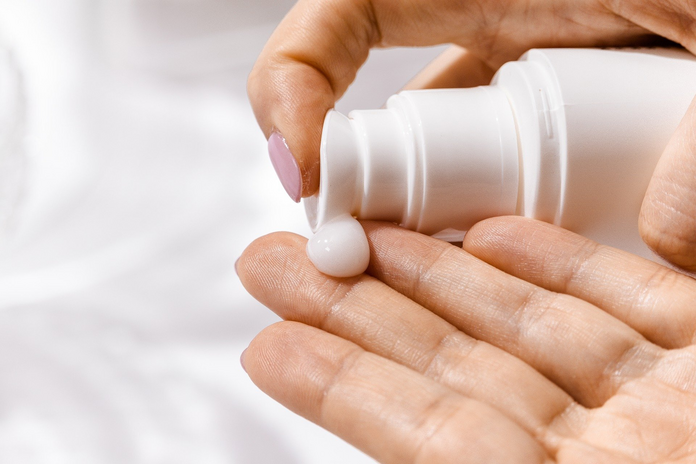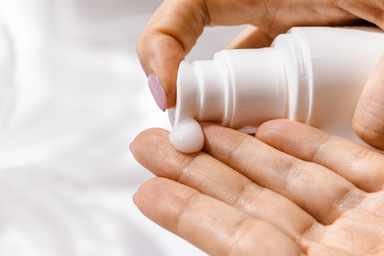My father was watching Youtube when an advertisement for a hair growth product came on. Marketed for men, Keeps boasts to spark new follicles in bald areas. “Should I do it?” he asked me. “Should I buy Keeps?” I didn’t even bother to turn around and look at the screen, instead answering him while transfixed on my book. “No,” I scoffed. “Why would you?” The idea was immediately ridiculous to me. How could a product reverse age?
While I was laughing, however, I realized that I am the paradox of this situation. As a young woman in her early twenties, I know how important it is to develop a skincare routine at this age. Anti-aging products were once heavily marketed for women in their 40s, but in the last ten years, there has been a shift to push these products onto women in their late teens and early twenties. The idea is that if we pamper our skin before wrinkles, sun spots, and scars, then we will delay the appearance of aging.
We throw the term around so often that we fail to see its absurdity. “Anti-Aging” doesn’t exist. We cannot reverse time nor its effects. These products may preserve skin, but they can’t undo the natural process of growing older. But that didn’t stop the US beauty industry from pocketing 191 Billion in 2019 on anti-aging products alone, as Zion Market Research reports.
Despite my knowledge, I feel the communal dread of all my twenty-something-year-old friends. I take deep looks into the magnified side of my double-mirror: is that a horizontal wrinkle on my forehead? At my birthday brunch, I shared how horrified I was to find a stray gray hair on my head. “My mom got her first gray at 21,” I said. “How awful is that?” A friend turned to me, shocked. “You think that’s bad? Look here.” She pointed at what she claimed to be the “beginning of crow’s feet.” (I saw nothing there, by the way!)
I’m so bothered by the idea of developing frown lines that now when I cry, I place my hand between my eyebrows so I don’t furrow them. My partner can’t keep a straight face while attempting to comfort me. “You’re nuts,” he says, snorting. “You’re such a diva.”
I feel rather silly to admit these things. And yet, I’m still bothered. Women are committed to anti-aging products because we are taught that growing older is synonymous with losing our beauty and femininity. Youth, and all of its ornaments, are praised: perky breasts, pre-pregnancy bellies, hairless crotches. To be attractive is to be smooth. To be a woman, it seems, is to maintain that smoothness to the best of our ability.
A heterosexual study from the dating site OkCupid revealed that women, from age eighteen to age forty, are primarily attracted to men their age. But men in their mid-thirties spend just as much time messaging teenagers as they do women their age. The study also reported that as a man grows older, the search for a younger woman increases, while his “upper acceptable age limit hovers just above his own age”. Christian Rudder, the site’s founder, states that 24-year-old women are universally most sought after. Rudder concludes that the “male fixation on youth distorts the dating pool,” making it harder for women to find a mate as they grow older.
Yet this “male fixation of youth” doesn’t just distort the dating pool: it distorts a woman’s reality. The fixation has infiltrated our beauty products, our brunch conversations, and our sex lives. Birthdays, for crying out loud, are drastically centered around sexual agency: turning 16 means a girl can consent in some states; turning 18 means a girl is legal; turning 21 means a girl can really have a good time.
After forty (when a woman is good for nothing in Hollywood) it becomes inappropriate to ask a woman how old she is. Concealing our age makes us more elegant, more alluring, more womanly to the world. In reality, all we are doing is complying with an image we cannot maintain. Looking 24 forever is impossible. Is that the most impressive thing we have to offer the world?
Let’s look at School Girl porn for a second. This is pornography that portrays women dressed in girl’s uniforms in school settings. The popular genre, which has “girl” in the title, has earned its own tab on Pornhub. But what is rightfully sexy about children at school?
If you say, “it’s not the uniform, it’s the woman in it,” then I have to ask “but why is she in it?” Why not put this woman in a costume that an adult woman would wear? Give me your sexy nurses and sexy maids, fine. But if school girl attire has never struck you as pedophilic, it’s because we’ve been taught that it’s okay to sexualize young girls.
Here’s a Finnish study if you need more convincing: Finnish men reportedly chose women substantially younger than them. On average, women in their mid-thirties reported that the youngest partner they’d consider was around 27. Men in their late thirties, however, considered having sex with a woman as young as 21.
It’s not illegal for a 35-year-old to have consensual sex with a 21-year-old. What’s concerning is that men in their 20s, 30s, 40s, and 50s all consider 21-year-old women to be most desirable. Sure, you can tell me it’s about the biological clock and need to procreate. It’s a widely accepted belief that men are evolutionarily predisposed to want women in their peak of fertility. But what isn’t said is that a man’s fertility begins to decline every year after age 20, as with women.
There is no difference. This is simply a game of language (which is often male-centered) used to scare women “to make us grateful for the male attention we receive and warn us that it could all evaporate within a few short years.”
It seems, however, that the beauty industry is all too happy about cashing in on this game. And since I am a 22-year-old woman, supposedly in her sexual prime, it’s hard to unlearn these norms at once. Especially when these norms are what your world considers beautiful. And thus grows the anti-aging serums, creams, and lotions in my medicine cabinet. I must confront a bitter reality: am I preserving youthfulness for myself, or for a male fantasy?
Audrey Hepburn, often praised on social media for “aging gracefully”, has become the face of a new approach: embrace your age. No need for botox, no need for retinol. Accept your stretch marks and your sagging neck. You’re an amazing woman with an all-natural body. Forget plastic surgery.
It’s a boisterous response, one that certainly validates the process of aging. It’s also fiscally sound, as I find myself annoyed when celebs reveal that their secret weapon to clear skin involved regular face-lifts and a cabinet of $200 Ski-II products.
But this response is not robust. We now run into the problem of shaming women who enjoy pampering themselves this way. I won’t put down women who seek out Botox treatments or spend hundreds of dollars on facials. That wouldn’t be legitimate ethos on my part — need I remind you I am a woman who attempts to prevent frown lines when I frown.
Although I am still drawn to these “anti-aging” products, I am trying to become detached. I don’t want to be 40 wishing I looked 20. If only the beauty industry would celebrate age rather than mask it, our dating pool might not be so toxic. I don’t care what age a woman wants to look, I just want us to stop questioning our value.
My father, who misses the hair of his twenties, isn’t so bugged out by this process. When I told him he shouldn’t buy the hair growth product, he chuckled and said, “Yeah, you’re right.” It was the laugh of someone who knows this is who he is: 50, calloused-hands, and balding. He’s accepted it.
While men are also encouraged to “anti-age” to an extent, there is not the same urgency there is for women. I assume this is partially because women, on average, reportedly choose men much close within their age bracket. This means heterosexual men will not have as much difficulty being attractive to their female counterparts. But if most of the 45-year-old men want to sleep with the 21-year old women, the 45-year-old women is left with less choices.
From the heterosexual lens, this is all looking rather dismal. But age disparity in the homosexual US community is reportedly more intense.
When famous straight couples share a significant age gap, rarely do people bat an eye. Leonardo Dicaprio 45, can openly date 22-year-old Camila Morrone without much backlash to his future film roles. When famous gay couples share a significant age gap, the response isn’t as kind. When British actor Stephen Fry, 57, got engaged to 27-year-old comedian Elliot Spencer, tabloids called Fry “a pedophile” and the engagement “a scandal.”
What is perverted in the gay community is “just how it is” in the straight community. Something has to change, but where do we start? The beauty industry is somewhere, but not good enough. This poison festers from the onset of puberty. I stumbled on this tweet that has stayed with me all week:
Something I heard a lot growing up: Girls, boys mature more slowly than you. Make allowances for them.
Something I never heard: Boys, girls mature more rapidly than you. Look to them as examples of intelligence and leadership (@_withawhy)
Maybe if we encouraged the latter statement, something could shift. It’s not a solution to the abundant issues that this article has addressed, but it’s a baby-step. Much better than anti-aging serums, anyway.



